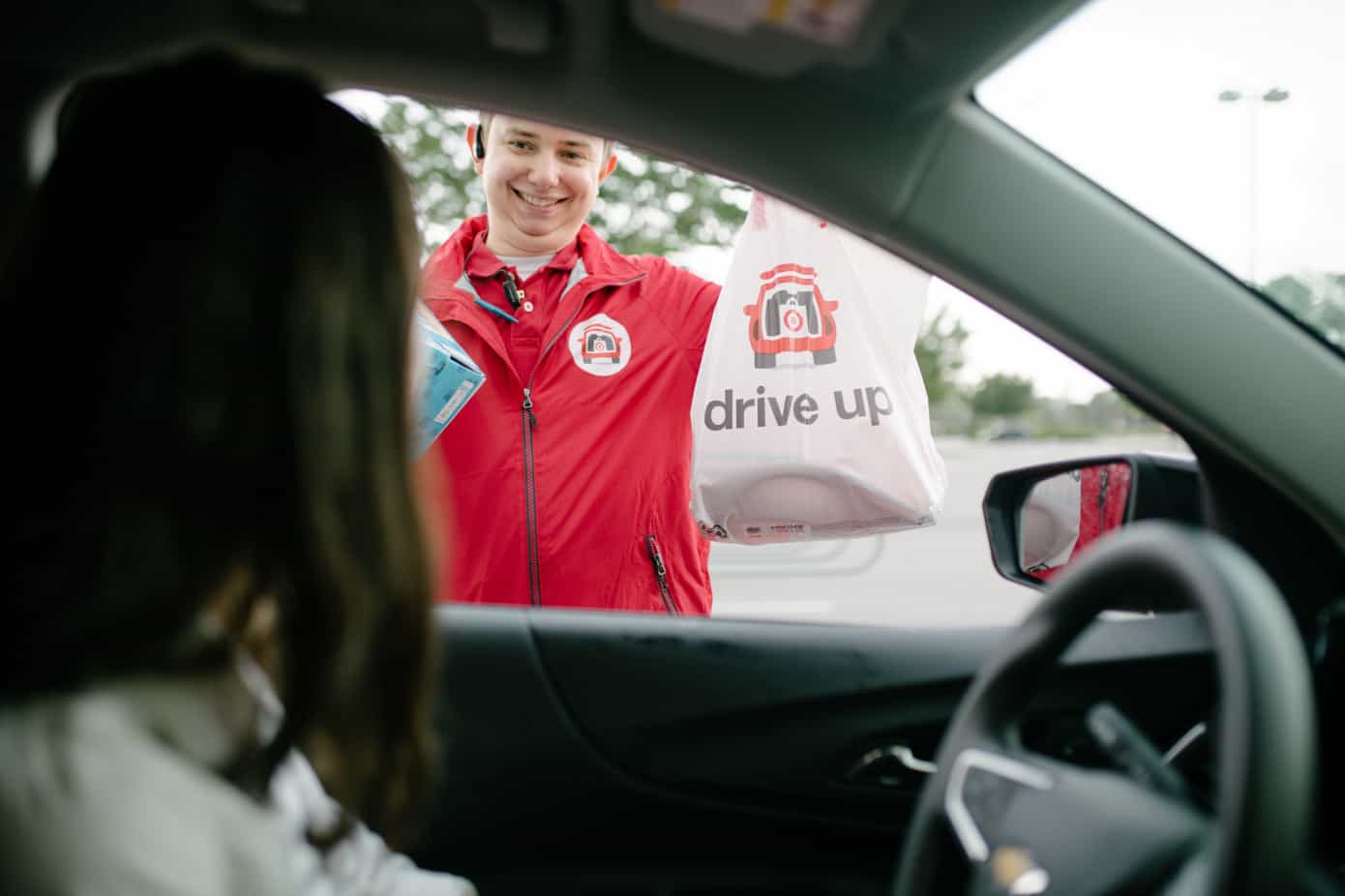
Amazon may be betting on the convenience of cashier-less stores, but Target is instead focused on order-ahead e-commerce. The company’s Drive Up service, which allows shoppers to place orders online, then pick up at a nearby store without getting out of their car, is now on track to reach nearly 1,000 U.S. stores before the end of the year. Meanwhile, its same-day delivery business is now live at 1,100 stores across 160 markets, and will reach 65% of U.S. households by year-end.
This week, Target said it’s expanding its Drive Up service to two more key markets, Colorado and California, where it will begin to roll out over the next month to 128 stores.
In total, Target Drive Up service is available today at over 800 stores in 25 states.
Like Walmart’s grocery pickup service, Drive Up is popular among parents with small children, where everyday shopping can be difficult. Parents, especially those with babies, have been using Drive Up for restocking their household essentials like diapers, Target says. But other shoppers have been using Drive Up as a means of getting larger, bulky online purchases – like TVs – loaded straight into their vehicles.
The service has grown to be one of the highest-rated services by Target shoppers, since its launch in the retailer’s home market of Minneapolis last fall, the retailer told us.
Drive Up, however, is only one of now several e-commerce initiatives Target has underway.
The company also offers a next-day delivery service called Target Restock, which it recently expanded nationwide. The service also now offers free delivery for all Target REDcard purchases. That means it’s a way to get items faster than Amazon Prime, without Amazon’s ever-increasing Prime membership fee or Pantry surcharge. It arrives, too, at a time when Prime customers are complaining about the speed of their shipments – items labeled Prime are often arriving late these days, and people are noticing.
This leaves room for other e-commerce players like Target and Walmart to go after Amazon’s unhappy customers with services of their own. Walmart, for instance, may be contemplating its own Prime-like program, given the news that it’s building out its own streaming service.
Target, which reported stellar earnings this week, has been working to win back marketshare from Amazon for some time.
Last year, Target said it would invest $7 billion into expanding its e-commerce business and its fix its stores, in order to better cater to shoppers’ changing habits.
The company is now in the process of remodeling 1,100 stores by the end of 2020 to address the order-ahead customer base. The new designs will include more space for customer order pickups, more parking for Drive Up, self-checkout lanes, and grab-and-go essentials near the front. It’s also opening small-format stores, many near college campuses.
Target today now also offers customers online order pick-up in stores, same-day grocery delivery through its Shipt acquisition, same-day delivery of in-store sales in select urban markets, and voice shopping in partnership with Google.
Today, Target shares are surging based on its just reported Q2 earnings where the retailer reported the strongest same-stores sales growth in 13 years, along with Q2 profit and revenue surpassing analyst expectations. Target reported $17.78 billion in revenue vs. $17.28 billion expected, and net income of $799 million, or $1.49 per share, compared with $671 million, or $1.21 a share, a year ago.
Target also said digital sales were up more than 40% during the quarter, and raised its earnings outlook for the year as a result.
The retailer has benefitted from the overall healthy e-commerce industry, however. Its one-day sale in July timed with Amazon’s Prime Day, drove its e-commerce sales this quarter, it said. It’s being boosted, too, by the closing of Toys R Us and Babies R Us, by grabbing market share in toys, games, and diapers and other baby needs.

